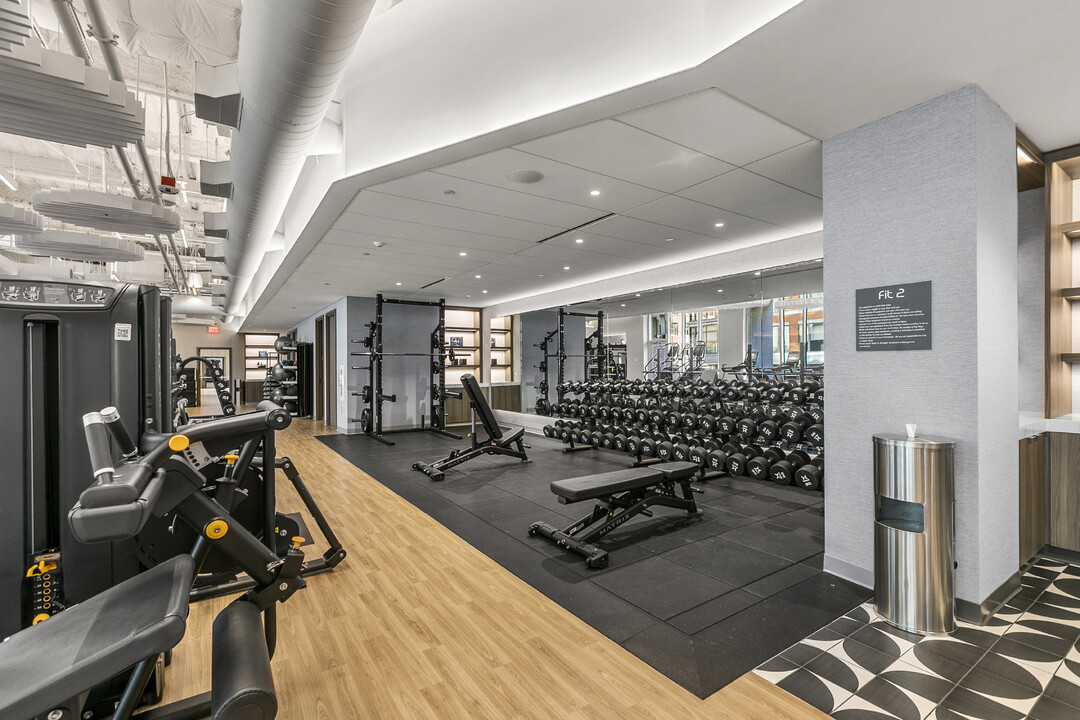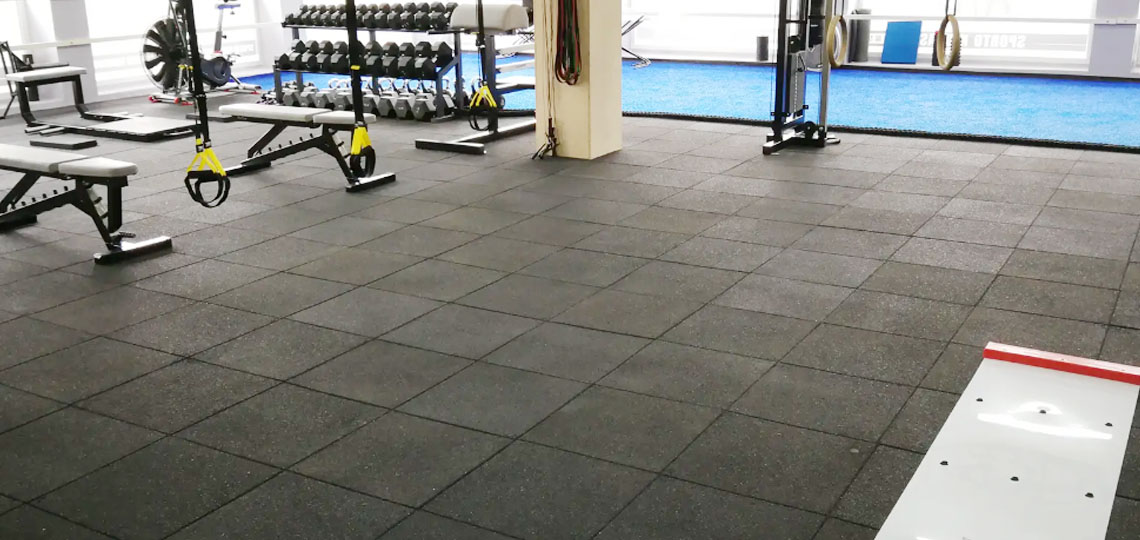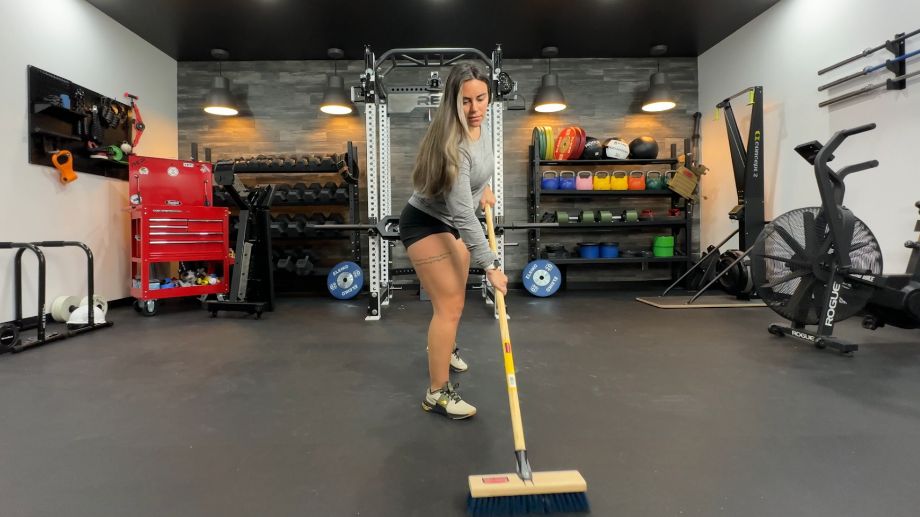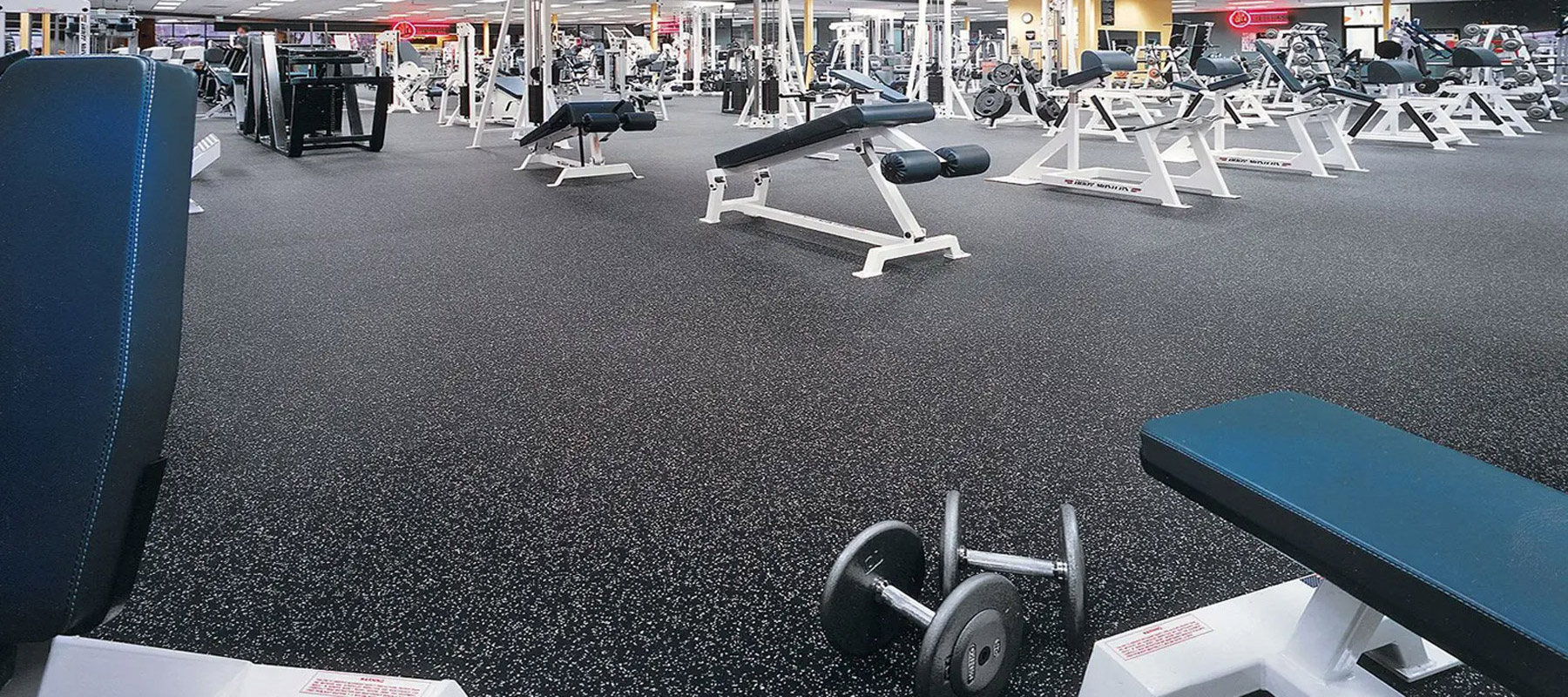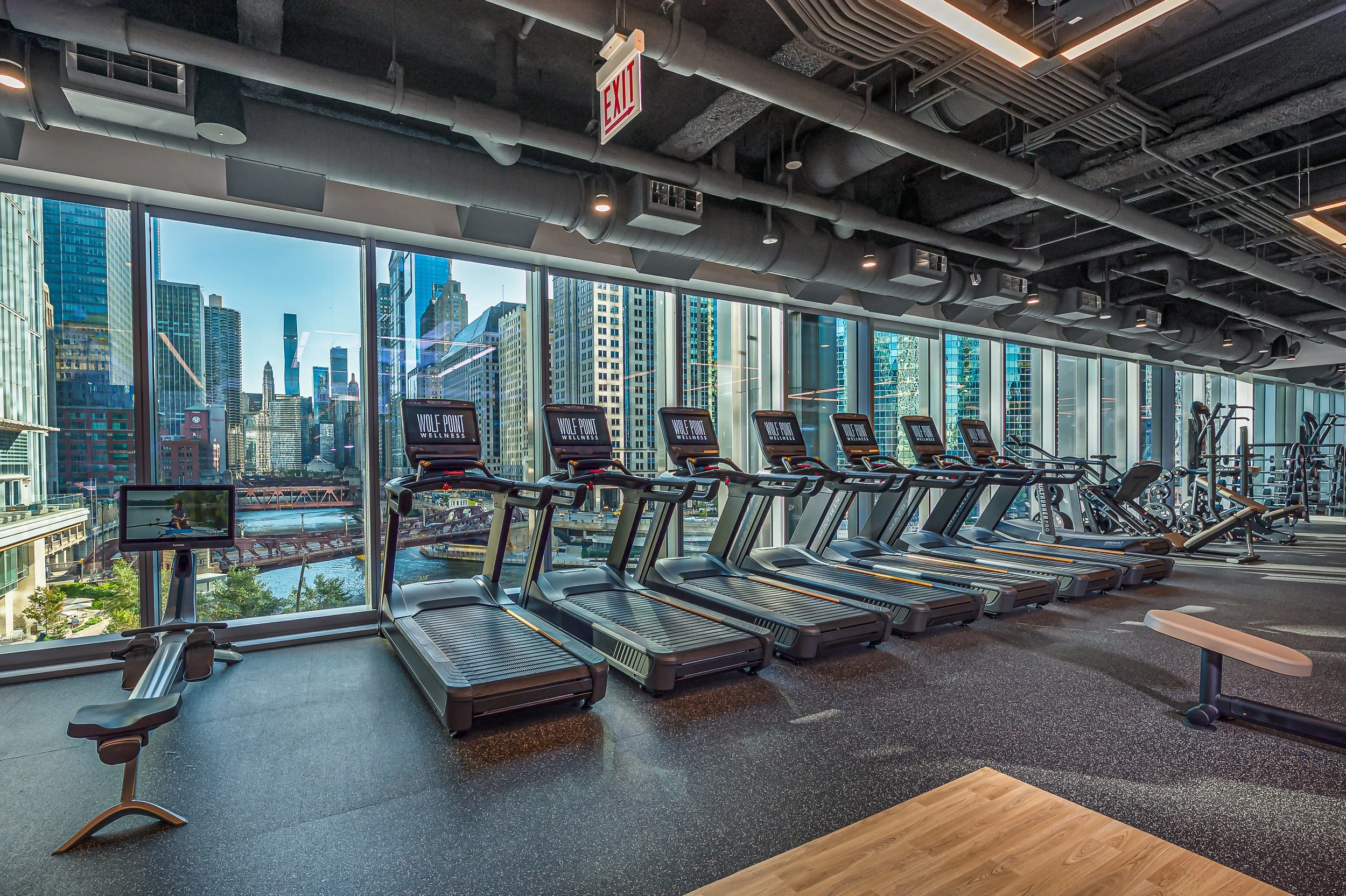Hey there, picture this: It’s a crisp fall morning, and I’m lacing up my sneakers in the basement, ready to crush a quick HIIT session before the kids wake up. The floor beneath me? Not some flimsy mat that shifts mid-burpee, but a smooth, resilient stretch of hardwood that gives just enough to save my knees while keeping that satisfying “thud” underfoot. I’ve been tweaking my home gym setup for years now—started with cheap foam tiles that buckled under a dropped kettlebell (lesson learned the hard way), and now? Solid hardwood. It’s not just flooring; it’s the heartbeat of the space, turning workouts into something almost meditative. If you’re eyeing hardwood gym flooring, whether for a pro setup or your garage sanctuary, stick with me. We’ll dive deep into why it’s a game-changer, how to make it work for you, and yeah, even the pitfalls to sidestep. Let’s get into it.
What Is Hardwood Gym Flooring?
Hardwood gym flooring isn’t your grandma’s living room oak—it’s engineered tough for the chaos of squats, sprints, and slams. Think strips or panels of dense woods like maple or beech, layered over a sprung subfloor that absorbs shock like a pro boxer dodging punches.
At its core, it’s about performance: that perfect bounce for basketball drills or the subtle give for yoga flows. I’ve seen it in action at my local rec center, where the floor hums with energy during pickup games. Unlike basic home wood, gym-grade versions meet strict standards like EN 14904 for safety and resilience, ensuring they handle heavy traffic without splintering or warping. It’s versatile too—works for everything from Zumba to weightlifting—and yeah, it looks damn good, adding that premium vibe to any space.
But here’s the real talk: It’s an upfront commitment, blending natural beauty with techy subfloors for longevity. If you’re converting a spare room, this could be your foundation for years of sweat sessions.
Why Choose Hardwood for Your Gym?
Ever stepped onto a gym floor that just feels right? That’s hardwood magic—durable enough for daily beatings yet elegant like a high-end studio. It’s the go-to for schools, pros, and home warriors because it balances shock absorption with ball response, cutting injury risk while boosting play quality.
From my buddy’s CrossFit box to my own setup, it elevates the whole experience. No more slipping on rubber’s occasional slick spots; hardwood grips just right, especially when prefinished for quick installs. Plus, it’s eco-friendly with sustainable sourcing options, and that classic grain? It hides scuffs better than you’d think, keeping things looking sharp without constant touch-ups.
The emotional pull? It’s inspiring. That wood underfoot whispers “you got this,” turning mundane reps into triumphs. If aesthetics matter (and why wouldn’t they?), it’s unbeatable—far from the industrial rubber grind.
Types of Hardwood Gym Flooring
Solid Hardwood Systems
Solid hardwood hits like the original boss—22mm-thick planks of maple or ash, nailed or glued over a resilient subfloor for that unbeatable “pop.” It’s the choice for high-stakes spots like NCAA courts, where every bounce counts. I installed a clip system in my basement last year; it floated perfectly, dodging the creaks of uneven concrete.
These shine in multi-use gyms, supporting bleachers one day and boot camp the next. Low-profile designs blend seamlessly with adjacent rooms, and factory finishes mean you’re sweating in hours, not weeks. Drawback? They’re pricier upfront, but that 40-year lifespan? Pure value.
Engineered Hardwood Options
Engineered boards layer a real wood top over stable plywood cores, fighting humidity like a champ—ideal if your gym’s in a damp basement. They’re lighter for DIY installs and mimic solid’s look without the warp worries. My neighbor swapped his sagging vinyl for engineered maple; now it’s his pride and joy for weekend volleyball.
Versatile for home gyms, they handle moderate impacts and come in budget-friendly grades. Not as bombproof as solid for pros, but for family fitness? Spot-on, with easier refinishing every decade or so.
Portable vs. Permanent Setups
Portable hardwood rolls out like a red carpet for events—think modular panels for tournaments, snapping together sans tools. Permanent ones anchor down for daily grind, with sprung layers tuned for specific sports. I borrowed a portable court for a backyard bash once; setup took 30 minutes, teardown even less.
Portables suit multi-event spaces, storing flat when idle. Permanents? They’re the workhorse, but less flexible. Choose based on your vibe—if events rule, go portable; for year-round grind, lock it in.
Pros and Cons of Hardwood Gym Flooring
Hardwood’s got that timeless appeal, but it’s not all slam dunks. Let’s break it down honestly—no sugarcoating.
Pros:
- Durability Beast: Withstands heavy loads like bleachers or racks, lasting 30-50 years with care.
- Performance Perks: Optimal shock absorption reduces joint strain; ball bounce hits 90%+ of concrete standards.
- Aesthetic Win: Warm, natural look elevates any gym—custom stains for logos or borders.
- Low Long-Term Hassle: Minimal upkeep beyond annual recoats; eco-sourced options feel good too.
Cons:
- Price Tag Sting: $12-26 per sq ft installed—ouch for big spaces.
- Moisture Foe: Warps if humidity swings; not ideal for steamy saunas.
- Install Intensity: Pros handle it best—DIY risks unevenness.
- Weight Limits: Fine for most, but ultra-heavy gear needs subfloor checks.
It’s like that reliable pickup truck: Costs more than a sedan, but hauls life’s loads without complaint. Weigh your wallet against the wow factor.
Hardwood vs. Other Gym Flooring Options
Curious if hardwood’s the champ or just hype? Let’s stack it against rubber and synthetics—I’ve wrestled with this choice myself.
| Feature | Hardwood | Rubber | Synthetic (Vinyl/PU) |
|---|---|---|---|
| Durability | 40+ years; refinishable | 20-30 years; impact-proof | 15-25 years; seamless |
| Shock Absorption | Excellent (sprung subfloors) | Superior for drops | Good; customizable cushion |
| Cost per Sq Ft (Installed) | $12-26 | $4-12 | $10-22 |
| Maintenance | Annual recoat; humidity control | Damp mop; low effort | Wax quarterly; easy clean |
| Aesthetics | Premium, natural grain | Functional, speckled | Custom colors; wood-look options |
| Best For | Basketball, multi-sport | Weightlifting, HIIT | Versatile, budget gyms |
Hardwood edges out for that pro feel and longevity, but rubber’s my pick for deadlift zones—cheaper and quieter. Synthetics? Great middle ground for splashy designs without wood’s fuss. In my setup, I zoned hardwood for cardio, rubber pads under racks—best of both worlds.
Installation Guide for Hardwood Gym Flooring
Prep Your Space Right
Installing hardwood? Start with a dry, level slab—moisture tests are non-negotiable, or you’ll cup like bad pasta. Clear the area, acclimate wood for a week, and humidity-check (35-50%). I skipped this once; ended up with gaps that mocked me for months.
Pro tip: Hire certified installers—they handle subfloor tweaks, saving headaches. Budget $2-5/sq ft extra for prep.
Step-by-Step Laydown
Lay subfloor first: Resilient pads or clips for bounce. Snap or nail planks perpendicular to joists, staggering seams like bricks. Sand smooth, then finish with urethane—two coats minimum. For portables, just interlock and tape edges.
Took my crew two days for 400 sq ft; game-lines added flair. Test for level—uneven means rework.
Finishing Touches and Cures
Seal with game paint post-finish; cure 72 hours before traffic. Add covers for events. My first install? Rushed the cure—scratches galore. Patience pays.
Maintenance Tips for Longevity
Daily Dust-Off Rituals
Sweep or dust-mop daily—dirt’s the silent killer, grinding finish like sandpaper. Use soft brooms; no vacuums with beater bars. I do a quick pass post-workout; keeps it pristine.
Wipe spills instantly—water’s enemy number one. Felt pads under gear? Lifesavers.
Weekly Deep Cleans
Damp-mop with pH-neutral cleaner weekly; auto-scrubbers for big gyms. Avoid soaps—they build residue. My routine: Bona spray and microfiber—sparkles without streaks.
Spot-check for wear; early fixes beat full refits.
Annual Refinishes and Checks
Recoat yearly; full sand/refinish every 7-10 years ($4-6/sq ft). Pros inspect humidity, joints—caught a loose board mine once, saved a spill.
Covers for non-gym use? Essential. Treat it right, and it’ll outlast your playlist.
Cost Breakdown: Is It Worth the Investment?
Hardwood’s no bargain-bin buy—expect $12-26/sq ft installed, materials at $7-12 for maple. For a 1,000 sq ft gym? $15K-25K total, plus $2K prep.
But crunch the lifecycle: 40 years means pennies per session. Rubber’s cheaper upfront ($4-12), but replaces sooner. My install? Hurt the wallet, but zero regrets—value in every bounce.
Factors jacking price: Custom logos (+$2-4/sq ft), curves, or rush jobs. Shop sustainable for grants; ROI skyrockets with usage.
Best Hardwood Gym Flooring Brands in 2025
Connor Sports: Pro-Level Reliability
Connor’s been flooring NBA courts since 1914—maple systems with killer subfloors for peak play. Their anchored resilient? Gold for schools.
I eyed their portables for events; seamless and tough.
Robbins: Innovation Meets Tradition
Robbins patents sprung tech that kills vibrations—perfect for dance or hoops. Exceeds standards; my rec center swears by it.
Custom vibes without compromise.
Kiefer USA: Custom Kings
Kiefer nails installs for big names like UK—full-service from design to lines. Their multi-purpose? Versatile dream.
Personal touch seals the deal.
For homes, Junckers offers clip systems—easy and elegant.
People Also Ask
Pulled these straight from the search wilds—real questions folks like you are pondering.
What is the best type of floor for a home gym?
Hardwood tops for balance of cushion and style, but layer rubber pads for weights. Maple’s resilient; avoids foam’s slip.
How much does hardwood gym flooring cost per square foot?
$12-26 installed—maple at $7-12 materials. Factor subfloors; long-term savings shine.
Can rubber mats damage hardwood floors in a home gym?
Rarely, if polyurethane-finished—use paper barriers. They protect from drops, actually.
What are school gym hardwood floors typically covered with?
Urethane finishes for hardness; covers for events. No epoxy—keeps the bounce.
Is hardwood good for gym flooring?
Absolutely—durable, safe, aesthetic. Just mind moisture; it’s a winner for multi-use.
FAQ
Q: How often should I refinish my hardwood gym floor?
A: Annually recoat; full refinish every 7-10 years based on traffic. Keeps it grippy and gorgeous—$4-6/sq ft.
Q: Can I install hardwood gym flooring myself?
A: Possible for small spaces, but pros ensure level and sprung perfection. DIY risks? Warps and wobbles—save the sweat.
Q: What’s the best wood for gym flooring?
A: Maple—shock-resistant, consistent bounce. Beech or ash for variety; all outperform oak in resilience.
Q: Does hardwood gym flooring need humidity control?
A: Yes—35-50% to dodge cupping. Dehumidifiers in basements; my setup’s stable year-round.
Q: Where can I buy quality hardwood gym flooring?
A: Brands like Connor Sports for pros; Junckers for homes. Local installers bundle it all.
There you have it—that solid underfoot feeling waiting for your next set. Hardwood gym flooring isn’t just a surface; it’s the stage for your stories, the quiet cheerleader in every rep. If my basement tales ring true, grab that measuring tape and dream big. Your future self (and knees) will high-five you. What’s your first move—install or upgrade? Drop a comment; let’s chat sweat and wood.
